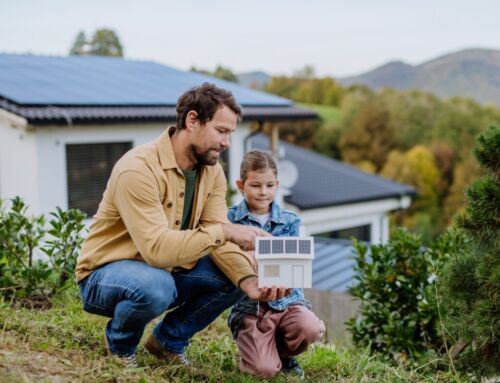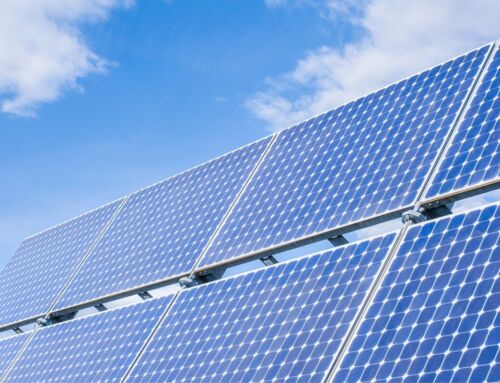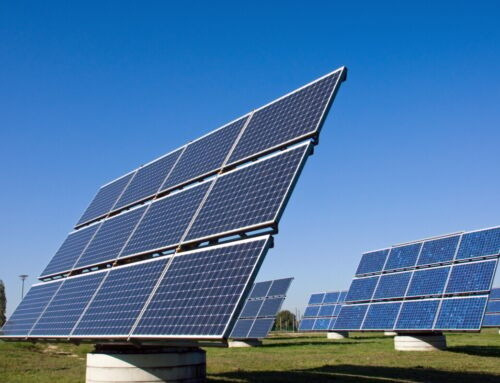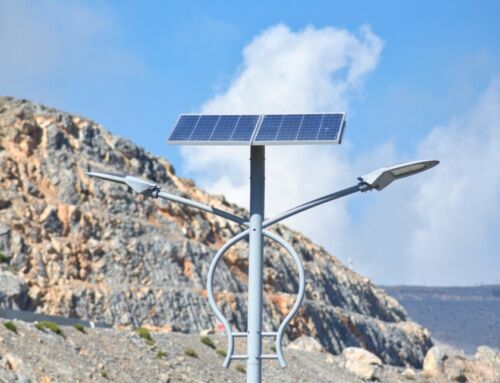Connect Solar Panels to Home: A Simple Guide
Understanding the Basics: How Do Solar Panels Work?
Connecting solar panels to your home is a transformative step towards sustainable living, offering both environmental benefits and potential savings on energy bills. Understanding how to connect solar panels to your home is crucial for maximizing their efficiency and ensuring a seamless integration with your existing electrical system. This process involves several key steps, from selecting the right solar panels to ensuring proper installation and connection to your home’s power grid.
How Do Solar Panels Work?
Solar panels convert sunlight into electricity through photovoltaic cells. These cells capture solar energy and transform it into direct current (DC) electricity.
Key Components:
- Solar Panels: Capture sunlight and generate DC electricity.
- Inverter: Converts DC to alternating current (AC) for home use.
- Electrical Panel: Distributes electricity throughout your home. Once the DC electricity is converted to AC, it can be used to power your home or stored in batteries for later use. By understanding these basics, you can better grasp how to connect solar panels to your home efficiently and effectively.
What Equipment Do You Need to Connect Solar Panels to Your Home?
Connecting solar panels to your home is a transformative step towards sustainable living and energy independence. By understanding how to connect solar panels to your home, you can harness the power of the sun to reduce electricity bills and minimize your carbon footprint. However, the process requires specific equipment to ensure a safe and efficient setup. Let’s explore the essential components needed to make this green transition seamless and effective. Each type has its own efficiency and cost considerations.
Inverter and Mounting System
An inverter is crucial as it converts the direct current (DC) produced by the panels into alternating current (AC) used by home appliances. Additionally, a sturdy mounting system is necessary to secure the panels to your roof. This system must withstand local weather conditions and optimize the panels’ exposure to sunlight.
Step-by-Step Guide: How to Connect Solar Panels to Your Home Safely
Connecting solar panels to your home is a transformative step towards energy independence and environmental sustainability. Understanding how to connect solar panels to your home safely is crucial for maximizing efficiency and ensuring the longevity of your system. This guide will walk you through the essential steps, making the process straightforward and manageable, even for beginners.
Assess Your Energy Needs
- Calculate your household’s energy consumption to determine the number of panels required.
- Consider future energy needs to ensure scalability.
Install the Solar Panels
- Choose a location with maximum sun exposure, typically the roof.
- Secure the panels using appropriate mounting hardware to withstand weather conditions.
Connect to the Electrical System
-
Inverter Installation: Convert the DC output from panels to AC for home use.
-
Wiring: Connect the inverter to your home’s electrical panel, ensuring all connections are secure and compliant with local codes.
-
Testing: Conduct a thorough test of the system to confirm functionality and safety. By following these steps, you can effectively learn how to connect solar panels to your home, paving the way for a more sustainable and cost-effective energy solution.
Choosing the Right Location for Your Solar Panels
Harnessing solar energy is a sustainable way to power your home, but knowing how to connect solar panels to your home effectively starts with choosing the right location. The placement of your solar panels can significantly impact their efficiency and the amount of energy they generate. Therefore, selecting the optimal spot is crucial for maximizing your investment and ensuring your home receives the most solar power possible.
When deciding where to install your solar panels, consider the direction and angle of your roof.
Ideally, panels should face south to capture the most sunlight throughout the day. However, east or west-facing panels can also be effective if south-facing isn’t an option. Additionally, the angle of your roof should be between 15 to 40 degrees to optimize energy absorption.
Factors to Consider
-
Shade: Ensure there are no trees or buildings casting shadows on your panels, as this can reduce their efficiency.
-
Roof Condition: Check that your roof is in good condition and can support the weight of the panels.
-
Local Climate: Consider your local weather patterns; areas with frequent cloud cover may require more panels to meet energy needs. By carefully evaluating these factors, you can effectively connect solar panels to your home and enjoy sustainable energy for years to come.

Ready to take the next step? Discover how solar energy can elevate your home and reduce those energy bills. Request a Free Solar Estimate at NEW SOLAR QUOTE
How to Integrate Solar Panels with Your Home’s Electrical System
Integrating solar panels with your home’s electrical system is a pivotal step towards sustainable living, offering both environmental and financial benefits. Understanding how to connect solar panels to your home not only enhances energy efficiency but also reduces reliance on traditional power sources. This process involves careful planning and execution to ensure safety and optimal performance, making it crucial to approach it with a clear strategy and the right expertise.
Assess Your Home’s Energy Needs
-
Begin by evaluating your household’s energy consumption to determine the appropriate size and number of solar panels required.
-
Consider future energy needs, such as electric vehicles or additional appliances, to ensure your system can accommodate growth.
Connect Solar Panels to Your Home
-
Install the Inverter: Convert the direct current (DC) generated by solar panels into alternating current (AC) used by home appliances.
-
Set Up the Electrical Panel: Integrate the inverter with your home’s electrical panel to distribute solar energy efficiently.
-
Safety Checks: Conduct thorough inspections to ensure all connections are secure and comply with local electrical codes.
Exploring the Benefits of Connecting Solar Panels to Your Home
Harnessing the power of the sun by learning how to connect solar panels to your home is not only a step towards sustainable living but also a smart financial decision. As energy costs continue to rise, solar panels offer a cost-effective solution by significantly reducing electricity bills. Moreover, they increase your home’s value and contribute to a cleaner environment by reducing your carbon footprint. Transitioning to solar energy might seem daunting, but understanding the process can make it a seamless experience.
Financial Savings
-
Reduced Electricity Bills: Solar panels generate free electricity, which can drastically cut down your utility costs.
-
Increased Property Value: Homes equipped with solar energy systems often have higher market values. ### Environmental Impact
-
Lower Carbon Emissions: By using renewable energy, you contribute to reducing harmful emissions.
-
Sustainable Energy Source: Solar power is a renewable resource, ensuring energy security for the future. Understanding how to connect solar panels to your home can unlock these benefits, making it a worthwhile investment for both your wallet and the planet.
Common Mistakes to Avoid When Installing Solar Panels
Connecting solar panels to your home is a significant step towards energy independence and sustainability. However, the process can be fraught with pitfalls if not approached carefully. Understanding how to connect solar panels to your home correctly is crucial to maximizing efficiency and avoiding costly mistakes. Let’s explore some common errors to steer clear of during installation.
Incorrect Panel Placement
One of the most frequent mistakes is improper panel placement. Solar panels need to be positioned where they can receive maximum sunlight throughout the day. Avoid placing them in shaded areas or at incorrect angles, as this can drastically reduce their efficiency. Consider consulting with a professional to determine the best location for your panels.
Skipping Professional Consultation
Another common error is skipping professional consultation. While DIY projects can be rewarding, solar panel installation involves complex electrical work that requires expertise. Hiring a certified installer ensures that your system is safely and correctly connected to your home’s electrical grid, preventing potential hazards and ensuring optimal performance.
How to Maintain Your Solar Panel System for Optimal Performance
Harnessing the power of the sun by connecting solar panels to your home is a smart move towards sustainability and energy independence. However, to ensure your solar panel system operates at its peak efficiency, regular maintenance is crucial. Proper upkeep not only extends the lifespan of your system but also maximizes your energy savings. Let’s explore some essential tips on maintaining your solar panel system for optimal performance.
Regular Cleaning
- Dust, leaves, and bird droppings can accumulate on your panels, reducing their efficiency.
Regular cleaning, especially in dry and dusty areas, ensures maximum sunlight absorption.
Monitor Performance
- Keep an eye on your system’s performance through monitoring apps or systems. Sudden drops in energy output can indicate issues that need immediate attention.
-
Professional Inspections
- Schedule annual inspections with a professional to check for any potential issues, such as loose wiring or damaged panels, ensuring your system remains in top condition.
How NewSolarQuote Can Help You Connect Solar Panels to Your Home
At NewSolarQuote, we simplify the process of connecting solar panels to your home by offering comprehensive support and resources. Our team of experts guides you through each step, ensuring a smooth transition to solar energy. From selecting the right solar panels to understanding the installation process, we cover it all.
Key Steps in Connecting Solar Panels
-
Assessment and Planning: We help evaluate your energy needs and the suitability of your home for solar installation.
-
Choosing the Right Equipment: Our experts assist in selecting the best solar panels and inverters tailored to your requirements.
-
Professional Installation: We connect you with certified installers who ensure your solar panels are safely and efficiently connected to your home’s electrical system.
Future-Proofing Your Home: Preparing for Solar Panel Installation
In today’s world, learning how to connect solar panels to your home is more than just a trend—it’s a step towards sustainability and energy independence. As energy costs rise and environmental concerns grow, solar panels offer a viable solution to reduce your carbon footprint while saving on utility bills. Preparing your home for solar installation not only enhances its value but also ensures you’re ready for future energy needs. Let’s explore how you can future-proof your home for solar panel installation.
Evaluate Your Roof’s Condition
The roof is a critical component when installing solar panels. Ensure your roof is in good condition and can support the weight of the panels. If necessary, make repairs or reinforcements before installation. Additionally, consider the roof’s orientation and shading, as these factors significantly impact the system’s efficiency. Proper planning and evaluation can maximize your solar investment’s return, making your home more energy-efficient and sustainable.
Take action today! Save money and protect the planet by going solar. Schedule your no-cost consultation now. Book Your Free Consultation at NEW SOLAR QUOTE
Want to see all your options? Head to FREE SOLAR QUOTES for a closer look at our solar offers.





